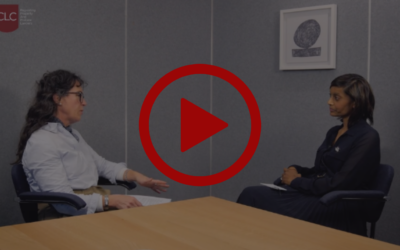Post-Completion Training For Support Staff
IQ Legal Training and Property Conveyancing Consultancy (PCC) have recently partnered to supply a series of 3 webinars focusing on key post-completion topics with a focus on how to avoid unnecessary requisitions raised by HM Land Registry. The webinars were conducted by Ian Quayle of IQ Legal Training and Maria Hardy, Company Trainer at PCC.
Importance Of Post-Completion
We are all aware that post-completion is the end part of a conveyancing transaction, where amongst other tasks, registration of the transaction takes place at HM Land Registry.
In the authors opinion traditionally post-completion is usually seen as a support or side service within the conveyancing profession, and it hasn’t been given the priority that it deserves. The main reasons behind this could be firstly, that it’s the final step of the conveyancing process, completion has taken place and the keys have been handed over so post-completion gets overlooked. Secondly, post-completion doesn’t create any new financial revenue stream for a firm and is therefore not a priority.
However, we need to change the way we think about post-completion. Post-completion may not be creating a new income steam but having the right post-completion practises in place and prioritising the impact of this part of the conveyancing process can save a firm time, increase client retention, reduce complaints, and very importantly save a firm hundreds if not thousands of pounds.
If a firms post-completion processes are not adequate, and the correct training is not provided to its post-completion team members, you run the risk of higher requisitions, increased number of cancelled applications, dissatisfaction from lenders and clients, removal from lender panels and insurance claims to name but a few.
Performing well pre-completion is no longer enough, and regulatory bodies such as the Council for Licenced Conveyancers, have specifically highlighted post-completion practises in their current 2024 Risk Agenda.
It is therefore essential that firms conducting conveyancing transactions start looking at their post-completion processes and practises to ensure they are compliant, suitable and up-to-date.
Post-Completion Training for Support Staff
In the recent series of webinars conducted by IQ Legal Training and PCC, basic post-completion training was provided with the aim of educating post-completion members showing the importance of their role, and teaching essential principles which will allow the individuals to understand why certain actions are carried out, the implications of drafting documents incorrectly and how to review applications prior to submission to ensure avoidable requisitions are not raised, allowing applications to be registered without delays.
Areas covered within the training included:
- what a title register looks like and what information is contained in the three individual registers
- a thorough review of various title registers and their associated plans with an in-depth look at each entry and the importance of these entries in a post-completion environment
- the difference between joint tenants and tenants in common and the implications of not correctly identifying a client’s preference to HM Land Registry
- how to action a form A restriction, with emphasis on appointing a trustee and how this should be reflected in a transfer deed
- how to complete standard registration documents, such as a transfer deed or mortgage deed, correctly with a focus on avoiding requisitions
- how to complete HM Land Registry application forms, such as the AP1 or FR1 form correctly with a focus on avoiding requisitions
the differences between the standard restriction forms, RX1, RX2, RX3, RX4 and RXC, when it is appropriate to use these forms and how to complete them top tips on how to avoid requisitions
During the training real emphasis was place on how to avoid requisitions, as this is such an important part of the post-completion role. In 2023 HM Land Registry issued 986,036 requisitions, and approximately 84,000 of those were for missing information alone. Therefore it is clear there is a real gap in post-completion knowledge and it is PCC’s goal to close this gap and offer essential post-completion training to the wider conveyancing profession.
Although the live training sessions have now concluded the sessions were recorded and are still available to purchase through the IQ Legal training website.
Property Conveyancing Consultancy (PCC)
Since 2017 PCC has provided a post-completion outsourcing service to the residential conveyancing sector with great success. PCC was founded on the belief that post-completion formalities had been long overlooked within this sector and the risks that could pose to a conveyancing firm and its clients could be catastrophic.
PCC was therefore established to eliminate this risk and a specialist team were put together to provide the ultimate post-completion outsourcing service, focusing on best practice, customer satisfaction and reducing the risk of requisitions and cancellations.
This year PCC is expanding and launching its Educational Hub; this is a specific training facility focusing on teaching legal professionals how to do post-completion right the first time.
PCC will be offering training courses based on each of HM Land Registry’s practice guides. PCC’s aim is to break the practice guides down into small understandable chunks, focusing on how to avoid requisitions and get your applications right the first time. Courses can be provided online or in person by one of PCC’s specialist trainers.
One of PCC’s goals is to educate the conveyancing profession on the importance of post-completion and with that in mind PCC, on a fortnightly basis, provide handy post-completion tips to it’s LinkedIn audience, in an effort to share knowledge and promote key information, which can help streamline registrations.
Post-Completion Tips
Below are a few of our recent tips which we hope will also be of use to you:
1. Form A restrictions are one of the most commonly registered restrictions but can often cause conveyancers problems. When a sole surviving proprietor applies to register a disposition under which capital money arises, this will be caught by an existing form A restriction. This is due to only the beneficial interest in the property passing on the death of a joint proprietor to their personal representatives and therefore a second trustee will need to be appointed to act with the surviving proprietor to overreach the restriction.
This is in stark contrast to a disposition by the personal representatives of a sole surviving proprietor. Here the legal estate vests in the personal representatives on the death of the sole proprietor (section 1(1) of the Administration of Estates Act 1925). Provided there are at least two personal representatives, a disposition will not be caught by the restriction.
2. An official search certificate (the search result), grants priority to the protected application over other registrable dispositions, rights, interests or matters that had not been entered on the day list before the official search, and are not themselves protected by an earlier official search.
However it is not commonly known that if the protected application is dependent upon an earlier registrable disposition, that earlier
disposition will also benefit from the protection afforded by the official search certificate if it is also lodged within the priority period. (HM Land Registry practice guide 12 provides further information on official searches).
3. When a restrictioner has died and the wording of the restriction does not indicate that the restriction will end upon death, or who has the benefit of the restriction after the death of the restrictioner, providing HM Land registry with evidence of death is not sufficient to cancel the restriction, as this does not prove that the interest protected by the restriction has ended.
Here a form RX3 must be submitted to HM Land Registry, and be accompanied by evidence to explain the nature of the interest
protected, and demonstrate how that interest has come to an end.
4. If a disposition to register a transfer is caught by a restriction which asks for the consent of more than two people, and its not possible to obtain consent of all of them, as long as two of the necessary consents can be provided to HM Land Registry, this will be sufficient to allow the registration of the transfer.
5. A deed of variation cannot be used to extend the length of a lease or increase the land demised. If a deed is lodged with HM Land Registry in respect of one or both of these two points, it will be treated as an automatic surrender of the original lease and grant of a new one.
A deed varying a lease that takes effect as a surrender and re-grant does not need to have prescribed lease clauses.
6. When registering a remortgage against a title which is subject to a restriction which refers to ‘no disposition’, the remortgage will be caught by the restriction and a compliance certificate or consent will be required.
The Land Registration Act 2002 does not define the term ‘disposition’, however section 27 of the Act identifies the types of ‘disposition’ required to be registered and this includes a ‘charge by way of legal mortgage.’ Therefore, HM Land Registry have interpreted this to mean that the words ‘no disposition’ will catch the registration of a new charge.
7. If a valid charge is registered against the title to a property by way of a unilateral notice or agreed notice, the notice will be effective to protect the priority of that charge against any subsequently registered dispositions, including later legal or equitable charges.
This position was confirmed in the case of Williams and another v Broadoak Private Finance Ltd and others [2018] EWHC 1107 (Ch). Here the Court ruled that the purchasers’ liens protected by a unilateral notice registered against a property will take priority over a legal charge registered at HM Land Registry after the date of the registration of the unilateral notice.
HM Land Registry Practice Guides And Souvenir Land
HM Land Registry Practice Guides And Souvenir Land
HM Land Registry Practice Guides And The Devolution on the Death of a Registered Proprietor
HM Land Registry Practice Guides And The Devolution on the Death of A Registered Proprietor
Minimising Risk In Post-Completion
Minimising Risk In Post-Completion by Maria Hardy, PCC Education Hub Company Trainer
Post Completion Explained
Post Completion Explained – Submitting an accurate application to update the Land Register and dealing promptly with any requisitions (queries from the Land Registry) that follow are vital to ensuring that your client’s interest in the property is protected and that any charge for a Lender is correctly registered.





